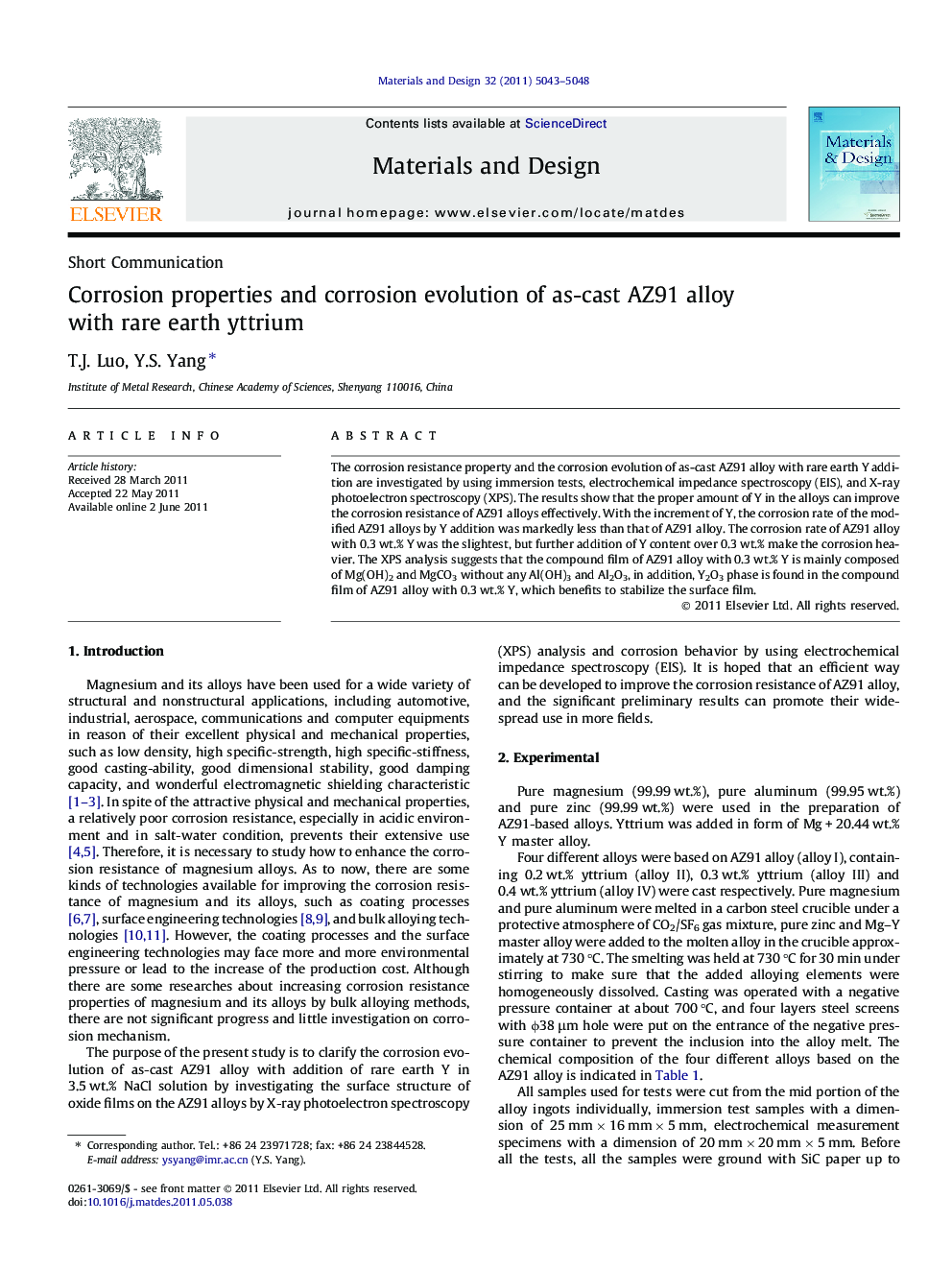| Article ID | Journal | Published Year | Pages | File Type |
|---|---|---|---|---|
| 831237 | Materials & Design (1980-2015) | 2011 | 6 Pages |
The corrosion resistance property and the corrosion evolution of as-cast AZ91 alloy with rare earth Y addition are investigated by using immersion tests, electrochemical impedance spectroscopy (EIS), and X-ray photoelectron spectroscopy (XPS). The results show that the proper amount of Y in the alloys can improve the corrosion resistance of AZ91 alloys effectively. With the increment of Y, the corrosion rate of the modified AZ91 alloys by Y addition was markedly less than that of AZ91 alloy. The corrosion rate of AZ91 alloy with 0.3 wt.% Y was the slightest, but further addition of Y content over 0.3 wt.% make the corrosion heavier. The XPS analysis suggests that the compound film of AZ91 alloy with 0.3 wt.% Y is mainly composed of Mg(OH)2 and MgCO3 without any Al(OH)3 and Al2O3, in addition, Y2O3 phase is found in the compound film of AZ91 alloy with 0.3 wt.% Y, which benefits to stabilize the surface film.
► Minor addition of Y will increase the corrosion resistance of AZ91 alloy, and 0.3 wt.% Y is the optimum addition. ► A film composed of Mg(OH)2, MgCO3, Al(OH)3 and Al2O3 is formed on the surface of AZ91 alloy with rare earth Y free. ► The film of AZ91 alloy with 0.3 wt.% Y is mainly composed of Mg(OH)2 and MgCO3 without any Al(OH)3 and Al2O3. ► The relative quantity of MgCO3 in the surface film of AZ91 + 0.3 wt.% Y is bigger than that of AZ91 alloy with Y free. ► Y2O3 phase is found in the surface film of alloy III, which benefits to stabilize the surface film.
